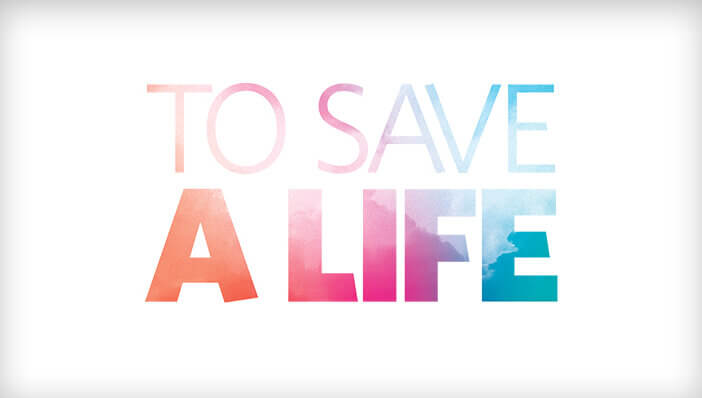
Jessica Gimeno is an author, a public speaker, an advocate, and one powerful force of nature. Though she double-majored at Northwestern University and graduated cum laude, Jessica knows better than anyone that just because you can’t SEE a mental illness, doesn’t mean it isn’t there.
In the TedTalk above, Jessica reveals that throughout her life she has experienced depressive episodes. They started when she was young—coming and going in small, insignificant spurts. By the time she was in high school, the episodes became longer, lasting hours or even days.
But it wasn’t just the depressive episodes. In fact, Jessica often experienced the radical opposite of depression as well: Hypomania. When she wasn’t feeling depressed, she was elated, high on life, hyperactive, and productive to a fault. It was a rollercoaster she hadn’t signed up to ride, but was also unaware as to whether or not she could ever get off.
It wasn’t until a close friend in college took her life that Jessica began to learn more about her own mental health. She learned that her friend had suffered from bipolar disorder, and in an effort to educate herself about what that friend may have been going through, Jessica recognized just how much she identified with the symptoms as well.
So, after a self-diagnosis, Jessica found the courage to see the campus Psychiatrist who then diagnosed her with Bipolar II.
But that’s all she did—diagnose.
“Depression Takes Practice.”
Jessica kicks off her TedTalk with this seemingly contradictory statement.
But the truth is, depression DOES take practice. Because after she left the school Psychiatrist that day, the only new information Jessica had was a clear diagnosis, and medication that *might help.
But medication, while an excellent tool, will not cure Bipolar disorder. It won’t eliminate the hypomanic episodes or lessen the depression so she can function like a human being.
So yes, “depression takes practice,” because when mental illness overcomes you, Jessica says it’s LIVING WELL with depression that takes practice.
Through trial and error, Jessica practiced for years, ways she could live well with depression (as well as several other health conditions that relentlessly wrecked havoc on her body).
What she found was that making lists and being proactive were her two greatest tools, which she sums up as three critical areas we can all tackle to effectively live well with depression: Being proactive, identifying urgency, and labeling difficulty.
Be Proactive, Not Reactive.
“Do you have a plan for the next time you get depressed?”
Jessica shares a time in college when she proactively scheduled designated times to study for two parts of an exam. The first scheduled study session went off without a hitch, but it was the less important of the two. Then when it came time for the second day and more pressing study session, Jessica woke up depressed.
The crippling affects made it impossible to get out of bed, let alone study for an exam. It taught her that when it comes to depression, being proactive means a couple of things.
First, it’s critical that you be proactive in identifying your own depression symptoms. Mental illness affects every person differently, but in being proactive in identifying your symptoms, you can then be proactive in developing an action plan for when those symptoms start to come over you.
Having a plan of action for how to live well when depression creeps in is proactive, not reactive, and it will change the way you tackle depression.
Identify Urgency
Living well with depression for Jessica comes in the form of lists, order and routine.
Every morning, she wakes up to the same song that gets her pumped up for the day ahead. She lists her tasks for the day, the week, next week and so on, then rates their urgency with stars, one being not urgent, and five being the most urgent.
On a good day, she could knock out the list with no issue. But in being proactive and anticipating depressive episodes, the star ratings help her identify what actually NEEDS to get done, and what can wait. It’s a proactive way to realistically prioritize your life, knowing that even though depression may not be a factor today, there’s no telling what difficulties tomorrow might bring.
Understanding Difficulty
Just like Jessica makes lists identifying how urgent a task is, she also organizes her day by how difficult a task might be. Taking into account that depression makes even the simplest of tasks seem impossible, Jessica organizes her to-do list with the numbers 1-3. The number one defines an “easier” task, like taking a shower, while three identifies a difficult task that HAS to get done.
When she’s depressed, Jessica makes it her goal to work from the ones, up. In crossing each “one” achievement off of her to-do list, she builds the confidence she needs to take on the twos and threes.
Understanding difficulty goes beyond just ranking a task based on how hard it is. For Jessica, it was making modifications to those level three tasks that made them possible to accomplish.
She gives the example of exercise—which is shown to improve symptoms of mental health, and has helped her personally on her journey with bipolar. It’s impossible. Working out for 30 minutes sounds good in theory, but in the depths of a depressive episode, Jessica was not about to brush her hair, let alone lace up her joggers.
So she modified it. 30 minutes of exercise seemed impossible, but 10 minutes of exercise made it a level two, maybe even level one task. Eventually, 10 minutes becomes 20 and 20 minutes becomes 30. But understanding the difficulty of what you’re setting out to do can make a world of a difference in taking depression by the horns.
Whether you or someone you love suffers from depression, anxiety, bipolar disorder or any other type of illness—may it be visible or not—Jessica hopes that people who hear her story would take comfort in knowing that although depression is real, and will sometimes win, “hope is real, courage is real, and resilience is real.”
Living well with depression takes practice, and you are not alone in your fight.
